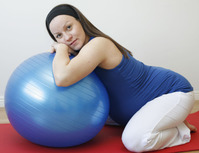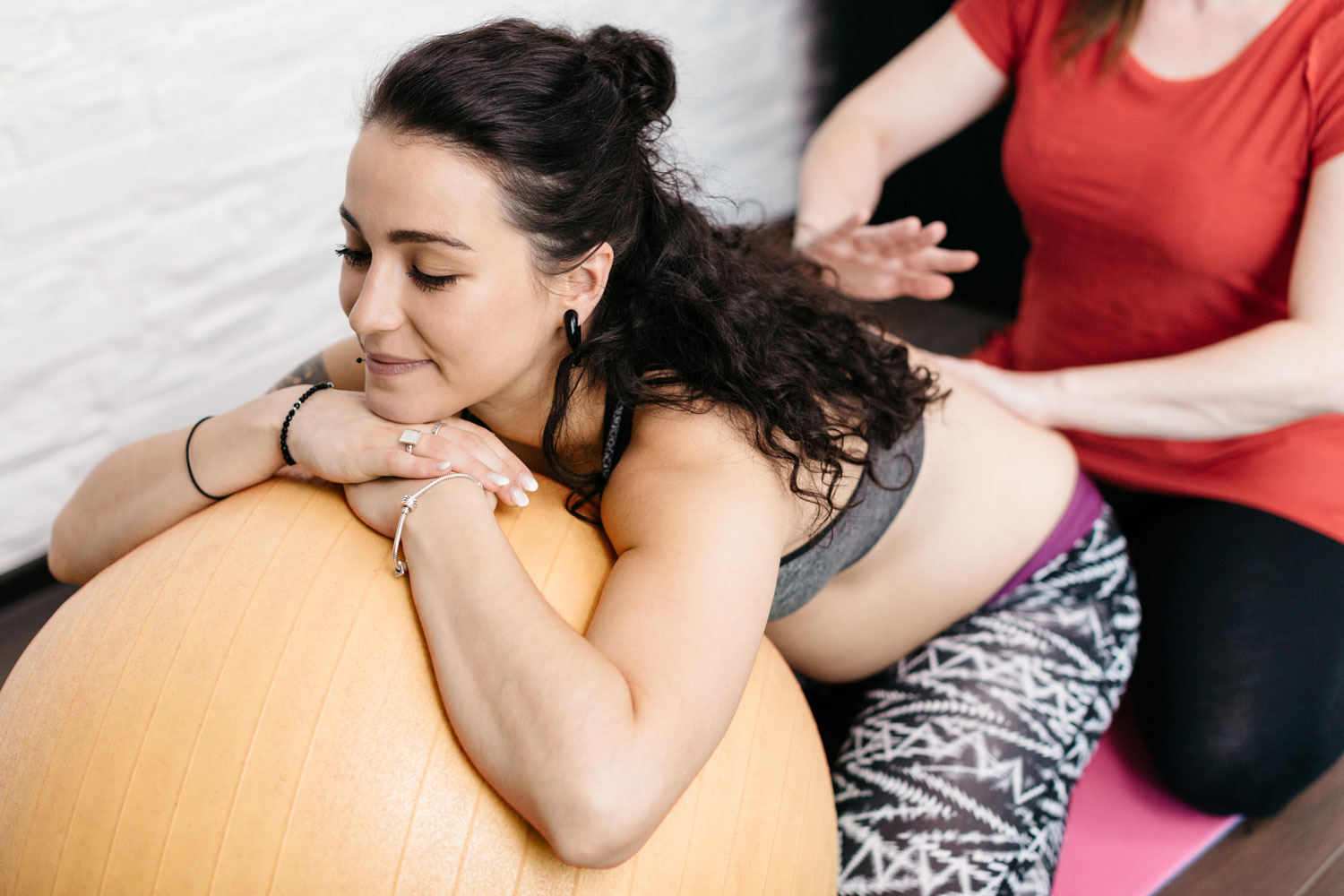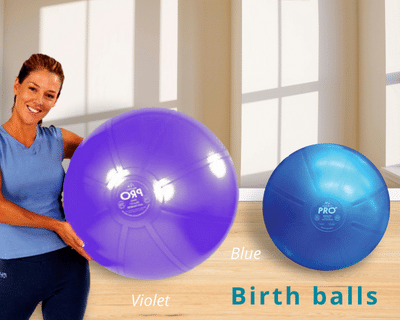
When it comes to childbirth and birth positions most midwives will tell you it’s not something you can do lying down. Yet, this is exactly how many women still give birth in Australia.
“Walking during labour was the only way I could deal with the pain. I walked the pain away. It felt great to be able to do this for myself. I felt in control. In my head I actually kept thinking, I’m walking away from the pain and leaving it behind.” (Cathy)
Changing positions and moving about during labour and birth is as ancient as birth itself. Ironically it is only in the last couple of hundred years that women have been giving birth on their backs in bed. The first record of a woman lying down to give birth was in the seventeenth century when the mistress of the French King, Louis XIV lay down, so he could watch the birth from behind a curtain. Next came the invention of the forceps in the middle of the seventeenth century and before long birth in bed, rather than upright, in the traditionally used birth chair, became the norm. Sadly this was not done with women’s best interests in mind. After several decades of research, we are trying to reverse this trend.
Women who have given birth will be familiar with birth room chants like ‘keep your bottom on the bed’ and ‘put your chin on your chest’ or even worse ‘take a deep breath and push, push, push.’ It is akin to torture, some of the misinformation we give women. It would be far more helpful to advise women to get their bottoms off the bed, to get their chins off their chests and to follow the natural urges of their bodies. We are not only handicapping women from achieving their best, we are actually, often creating problems.

The way you position your body during labour and birth can make a dramatic difference to the way you cope with labour. It gives the difference between the pain relief you require, how easily you give birth and whether you tear during the birth. Changing positions for active labour and moving around during labour and birth is ideal. Not only does this help increase comfort and reduce pain. It also distracts the mother and gives her something to do where she can feel in control. Changing positions and keeping off your back also helps maintain a good oxygen supply to the baby.
Changing positions during labour and birth changes the shape and size of the pelvis.
This helps the baby to move through the birth canal. The pelvis, which the baby has to pass through, is made up of movable bones connected by cartilage and ligaments that soften during pregnancy due to the effect of a hormone called relaxin. This softening allows movement to occur in the bones, which enables the pelvis to open as wide as possible when giving birth. It is also why women often suffer pelvic pain when pregnant.
When a woman is in an upright or forwards leaning position the angles of the pelvis and internal dimensions change dramatically, helping the baby manoeuvre its way through. When the mother lies or sits on her bottom, her sacrum (lower back) is pressed up towards the baby’s head. This causes her pain when the baby tries to move past the sacrum-hence the difficulty of actually keeping your bottom on the bed! But even worse, it narrows the outlet of the pelvis making it much harder for the baby to be born. Likewise, if the head gets through okay, then this reduced diameter can cause the baby’s shoulders to be harder to deliver. This is known as shoulder dystocia and it is a serious obstetric emergency.
The other disadvantage of giving birth lying on your back is you are essentially pushing the baby ‘uphill’ and working against gravity. The perineum is more likely to tear, particularly when stirrups are used. Women also find it harder to deal with their contractions in this position because they are unable to rock their hips and use warm water and massage for pain relief.
Common positions for labour and birth
There are four principle positions used for labour and birth. These are: squatting, kneeling, standing and semi sitting. However, more than forty different birth positions have been recorded around the world.
The best advice for women is to assume the position they feel most comfortable in. Where we give women lots of options such as mats and bean bags on the floor, birth stools and baths, we find they rarely want to birth on their back. Labouring in water (baths, birth pools) provides great support for all kinds of birth positions for active labour.
Positions for early labour
In early labour women often feel restless and want to move around and keep busy. This is fine as long as you don’t overtire yourself before labour gets underway. If labour starts during the night, especially if it is your first baby, try and lie down (on your side) and get some rest. Encourage your partner to sleep because you will need them at their best to support you later. If you are too uncomfortable to lie down then try having a shower or a bath. Leaning over the back of a chair or kitchen bench and rocking your hips back and forth can be quite comforting.
Some women spend their entire labour doing this. If your legs are feeling tired, get onto your hands and knees. You can also kneel over a bean bag or exercise ball. Whatever position you are in it is always good to alter it every so often so, for example, your knees don’t end up too sore when in a hands and knees position. Altering your position also helps to move the baby through your pelvis. As labour progresses women tend to want to move less.
Positions for active labour and birth
Keeping active is a great way to make birth faster and less painful for you. Walking is the most common thing women do during labour.
Standing or leaning forwards
It is a popular position for active labour and birth. Especially if you are supported by your partner or a piece of furniture. This position allows you to support your weight but has the advantage of gravity. It also makes the contractions easier to cope with and makes them more efficient, helping to shorten the labour. It allows you to rock backwards and forwards to help with contractions. Also, it allows easy access to massage. Leaning forwards while being upright can help relieve back ache. Some women like to put their arms around their partner’s neck and get them to rub their back.
Swaying to music and breathing in rhythm can all help. Midwives call this the ‘slow dance’ position. Some women find it very comforting to place one foot on a seat and bend their knees and lunge forwards or sideways repeatedly during a contraction. This position for active labour can widen one side of your pelvis and is helpful in getting the baby to move its head into a better position. Climbing stairs if you have the energy has a similar effect. Standing can increase your urge to push and make the second stage much faster. It is important to breathe rather than push your baby’s head out when standing, in order to minimise tearing. Standing is so powerfully effective that you need to take birth slowly.
All Fours
Many women find the all fours position (hands and knees), or kneeling forwards onto a chair or bed comfortable, especially if their legs are getting tired from standing. Leaning forwards helps to relieve back pain taking the weight off the baby’s head and away from the spine. This is ideal if your baby is in a posterior position (back of the head against your back). Women can rock their hips in this position helping the baby manoeuvre through the birth canal.
Back massages and hot packs are easy to use when women are on their hands and knees. This position for active labour is also kind to your perineum as it stops the baby’s head from pushing so deeply into the perineum (which happens when women are pushing on their back) and directs it out of the vagina. All fours and side-lying are the best positions to birth in when you have haemorrhoids and/or pelvic pain.
Sitting astride a chair facing its back or sitting on a toilet seat or birth stool
It is another great position as it helps to open the pelvis up, maximises the effect of gravity but doesn’t tire your legs out. If you put a pillow over the back of the chair you can protect your belly and have something soft to rest your arms and head on. Women often gravitate to the toilet seat in second stage. It helps them to open up the pelvis and also relax the pelvic floor without having to fear an ‘accident.’ Rocking back and forward on an exercise ball is also very comforting. Women use exercise balls to lean over, sit on or lean back on. Make sure if you are buying one that you get the right size for your height. Many labour wards and birth centres provide these balls now.
Squatting allows the pelvis to open to its maximum size and the woman benefits from the effect of gravity. This is often the position that really begins to move the baby down the birth canal during the second stage if progress is slow. Some women find this quite tiring and it is worthwhile practising to squat before birth and getting your partner to try and support you in this position. Birthing stools can help when women are too tired to squat on their own. Birth stools evolved from cultural practices of lap sitting or squatting for birth.
Side lying
It is an excellent option for women when they feel too tired to assume upright positions and want to rest in between contractions. It is also a restful position in early labour when you can still manage to doze off in between contractions. If you have an epidural that is limiting your mobility then lying on your side is an ideal position. This position keeps the pressure off the back, allowing for the pelvis to open. It also seems to make the uterus contract more efficiently.
This position is also ideal where there is still a little bit of cervix left towards the end of the first stage of labour and the woman is getting strong urges to push. It is easier to breathe through the contractions on your side until the cervix is fully dilated and pushing can safely begin. Lying on your side is a great position if you have haemorrhoids or want to slow down a rapid birth. I encourage women who have had a bad perineal tear with a previous birth to use this position. Putting a pillow between your legs in when lying on your side can make it more comfortable for your hips.
Semi-sitting
It is the position many women give birth in. It can be a good position if women get tired of standing or being on their hands and knees. Lying on your side, however, is a better option. Many women end up in a semi-sitting position following an epidural or if their baby’s heart rate needs to be continuously monitored with a machine. This is also the most common position if a forceps or vacuum is needed. The disadvantages are that sitting reduces the diameter of your pelvis. The oxygen flow to the baby can also be reduced in this position, particularly if you are not sitting upright enough. This position can be more painful because of the pressure on your sacrum. It is also harder to rock your hips and it limits access to massage and warm packs.
Your choice of the position may be restricted if: you need an epidural; your baby’s heart rate indicates that a change of position would help; you need to have the baby’s heart rate continuously monitored or you need assistance (forceps or vacuum) with the birth.
It is important to remember there is no ‘one size fits all’ when it comes to birth positions. Don’t get fixed on giving birth in only one position. This is because it might not be the right one for you. Also, it might prevent you from finding your ideal position.
Tips for labour
- Try lots of different positions for active labour until you find the best position for you.
- Keep active for as long as you can.
- Try and stay off the bed!
- Have support people who are prepared to help you, support you and make you comfortable.
- If you are tired and need to rest, try to choose a position that keeps you off your back and as upright as possible.
- Avoid unnecessary interventions like epidurals if possible.
- Labour in water (bath/birth pool) if you can, as it is much easier to move about and assume a variety of positions in the water.
- Find out what your birthplace will provide in the way of mats, beanbags, birth stools and exercise balls.
- Many doctors and some midwives feel nervous about helping women give birth to different positions so make your wishes clear beforehand.
- Your birthing position is your right!

 Wish List
Wish List


My own experience tells me that active birth is the way birth was intended. I have found walking stairs helpful in early labour. As labour intensifies, dropping to all-fours seems to (literally) ground me and my mind. The times when I have been coerced into birthing on my back have felt much more painful, uncomfortable and unnatural.